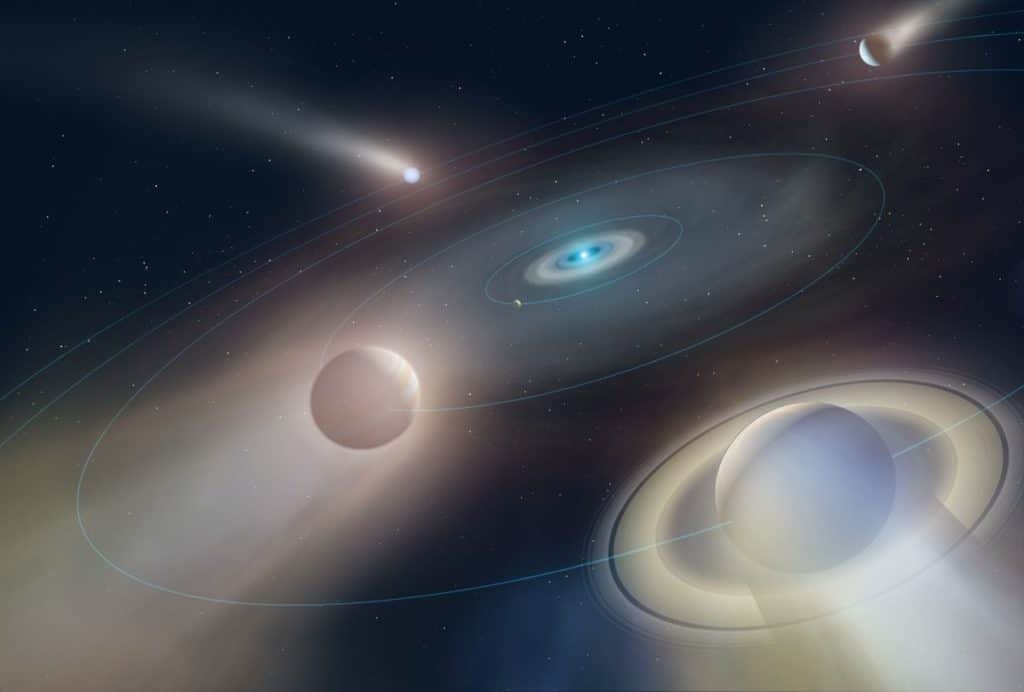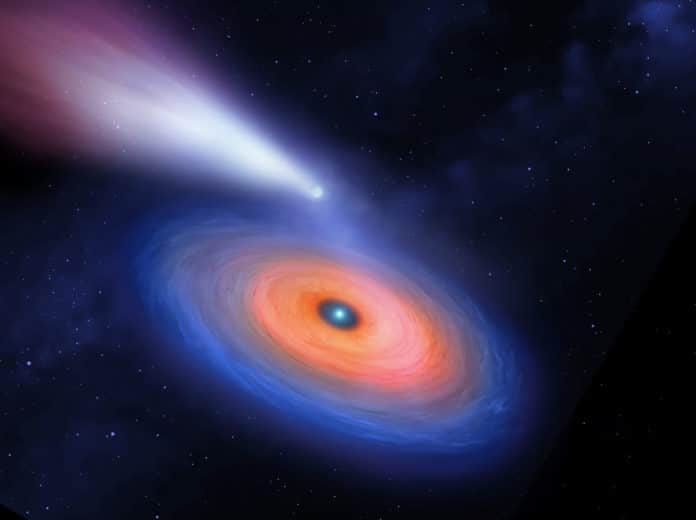Until now, there has never been evidence of a planet that has survived a star’s transition to a white dwarf.
Astronomers from the University of Warwick’s Department of Physics and the Millennium Nucleus for Planet Formation (NPF) at the University of Valparaíso have recently presented fresh evidence of a giant planet orbiting a white dwarf star. The planet is found in the form of a disc of gas formed from its evaporating atmosphere.
The Neptune-like planet orbits a star a quarter of its size about once every ten days, leaving a comet-like tail of gas comprised of hydrogen, oxygen, and sulfur in its wake.
Astronomers identified the star dubbed WDJ0914+1914 in a survey of ten thousand white dwarfs observed by the Sloan Digital Sky Survey. They analyzed subtle variations in the light emitted from the system to identify the elements present around the star.
The data revealed very minute hydrogen’s spikes- which was unusual. Not only hydrogen, but they also detected spikes of oxygen and sulfur, which they had never seen before.
Then by using the Very Large Telescope of the European Southern Observatory in Chile, they obtained more details of this star and found that the shape of the hydrogen, oxygen, and sulfur features are typical indicators of a ring of gas.

Lead author Dr. Boris Gaensicke, from the University of Warwick, said: “At first, we thought that this was a binary star with an accretion disc formed from mass flowing between the two stars. However, our observations show that it is a single white dwarf with a disc around it roughly ten times the size of our sun, made solely of hydrogen, oxygen, and sulfur. Such a system has never been seen before, and it was immediately clear to me that this was a unique star.”
Averaging all the spectra, scientists confirmed that the star WDJ0914+1914 was accreting sulfur and oxygen from the disc. Analyzing the data, they were able to measure the composition of the disc. They concluded that it matches what scientists expect for the deeper layers of our own solar system’s ice giants, Uranus and Neptune.
Dr. Gaensicke said: “This star has a planet that we can’t see directly, but because the star is so hot it is evaporating the earth, and we detect the atmosphere it is losing. There could be many cooler white dwarfs that have planets but lacking the high-energy photons necessary to drive evaporation, so we wouldn’t be able to find them with the same method. However, some of those planets might detectable using the transit method once the Large Synoptic Survey Telescope goes on the sky.“
“This discovery is major progress because, over the past two decades, we had growing evidence that planetary systems survive into the white dwarf stage. We’ve seen a lot of asteroids, comets, and other small planetary objects hitting white dwarfs and explaining these events require larger, planet-mass bodies further out. Having evidence for an actual planet that itself was scattered in is an important step.”
This study is published in Astrophysical Journal Letters.
